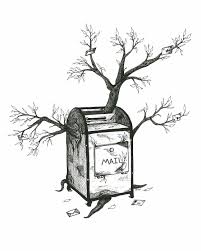One thing I've taken notice of a lot lately is the use of mass planting, which made me wonder how I feel about the use singular species planted in big numbers - is it a practical and economic way to fill the green void or just lazy landscape design?
 |
| A combination of two grass species - giving different heights, colour and texture |
Don't get me wrong, mass planting is an extremely useful & practical tool when it comes to alleviating or rehabilitating soil erosion and controlling, dispersing or reducing water run off. Also in nature mono-cultures or low bio-diversity systems also exist and in trying to recreate these vegetation communities, a mass planting outcome is required.
 |
| Mass planting of Pachysandra terminalis in the Tiergarten in Berlin - mimicking it's natural occurrence. |
Away from the recreation of natural systems or planting to protect fragile areas, mass planting in the landscape can create stunning displays of form, texture and seasonal colour. Rows of hedges can be clipped to shape, cutting bold blocks of shape or serpentine lines through the landscape. Grasses and strappy leaf plants can provide multi faceted interest with their long, thin leaves as well as texture & colour contrast through their flowers and inflorescence. Seasonal perennials & annuals will give bursts of brightness throughout the warmer seasons and will attract the eye of passers by.
 |
| Pretty Petunia's - they give seasonal colour but need replacing. |
However there are pitfalls to planting on mass. By choosing colourful, seasonal annuals you will face the need to constantly replenish them. As the seasons change they'll begin to fade out and begin to look ratty - this is okay of course if your landscape has the budget for maintenance and replanting, if not then there's a good chance it will become an eyesore.
 |
| A mass planting of Lomandra longifolia in a park, it mimics a natural setting but without proper maintenance looks poor after awhile. |
I don't want to sound all doom and gloom but there are a couple of other negatives to mass planting that you will need to know about before undertaking such an exercise.
The first issue is the increased potential for disease and pest problems to occur. In any system with low diversity or a total mono-culture the chances of a disease or a pest causing a problem increases significantly, there just isn't any buffers or filters, does the potato famine of Ireland ring a bell?
But this also gives rise to the "only the strong survive" theory, where the stronger plants that resist will build up tolerances that will be passed on in their genes or will develop mechanisms, such as mass seeding, to counteract the problem of decline.
 |
| Gazania tomentosa - tough, great colour contrast but has the potential to be a problem. |
The last point brings me to the next issue - mass planting can encourage the spread of plant species due to increased numbers of seed (or vegetative reproduction) being produced in a small area. Take the humble Agapanthus, a favourite of the landscape industry and gardeners alike for decades due to it's robust, waterwise nature.
 |
| Agapanthus sp. - tough, waterwise, indestructible, weed? |
In this writer's opinion, Agapanthus are likely to be, along with the cockroaches, the only thing to survive a nuclear holocaust . There are a number of leafy, bushland suburbs around Sydney that this easy going plant has become a problem, especially in areas of the Blue Mountains with high amounts of run off (to carry seeds into nearby bush) and older storm water systems, here Agapanthus has become a garden escapee.
Of course with monitoring, control as well as the development and advancements in plant breeding we have been available to identify high risk species, manage their movement throughout the landscape and also created sterile or resilient forms that can be enjoyed without the worry of spread or decimation due to pest and disease.
I have always been a fan of the form and function that nature creates, the randomness and beauty from letting nature take it's course. That can't always be achieved in the man made world but we are trying to put our creative spin on things.
So I guess it comes down to choosing wisely, as with any planting situation - do your homework. Look around, what works in your area? What is suitable for your budget and do you have the time to look after it properly? Proper research and planning always goes a long way.




































